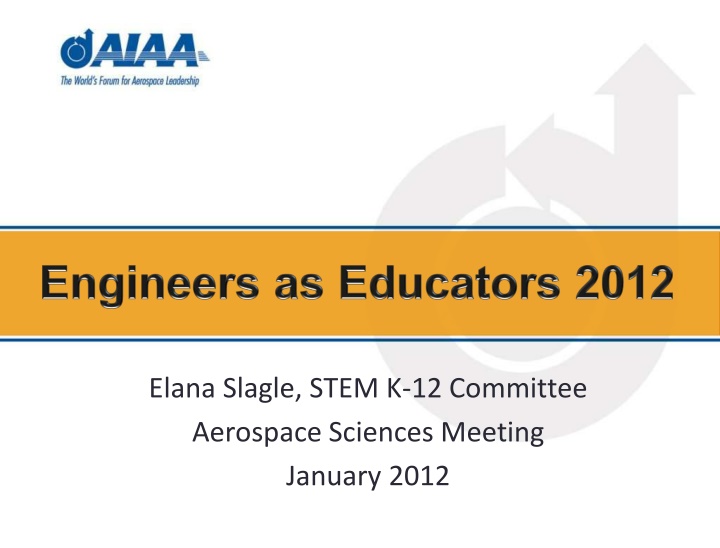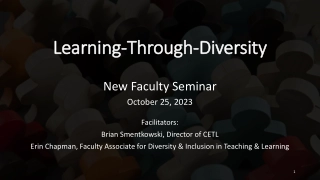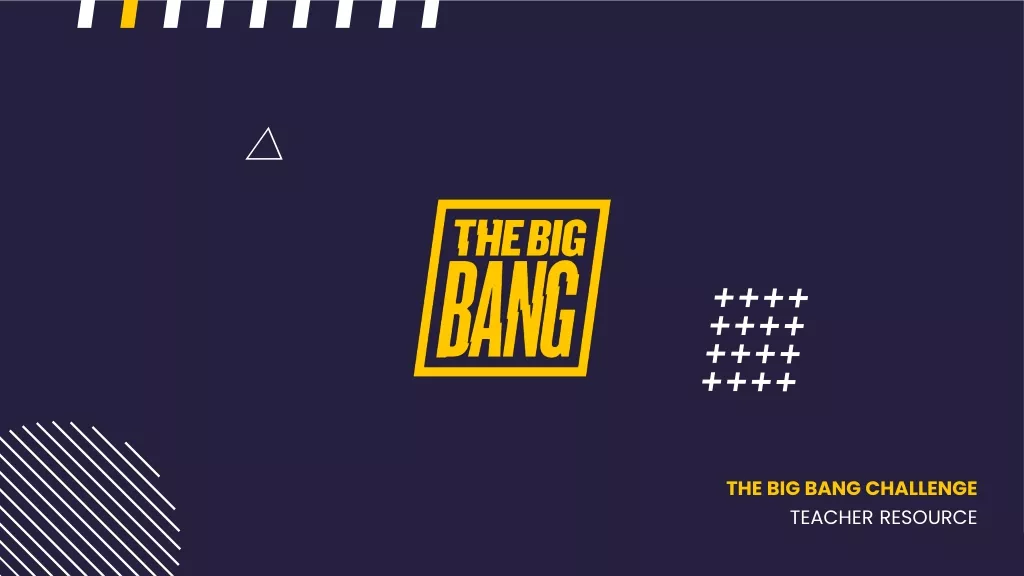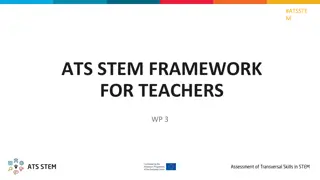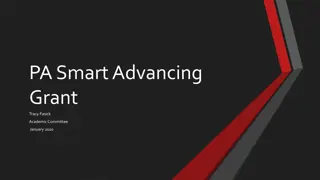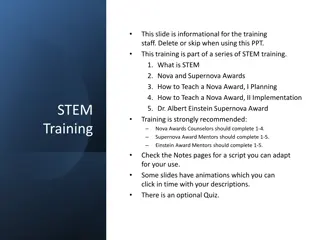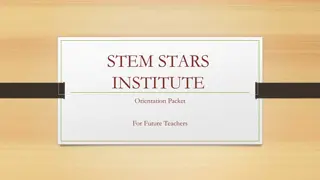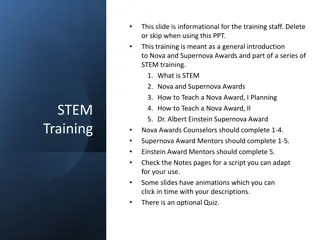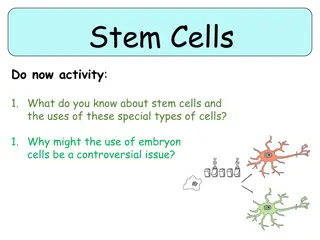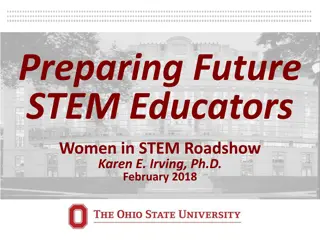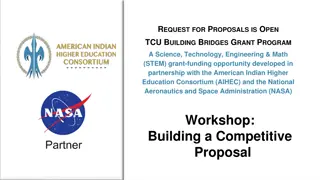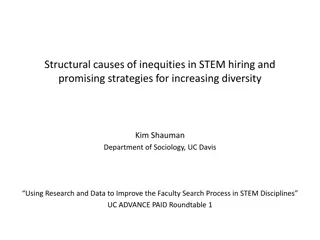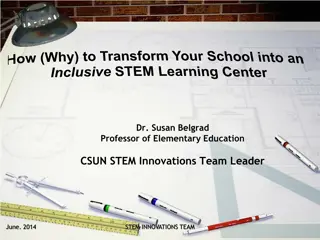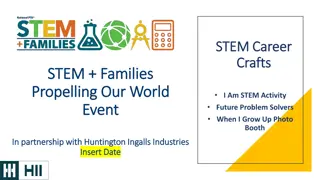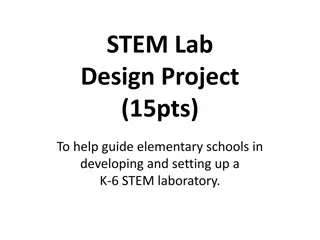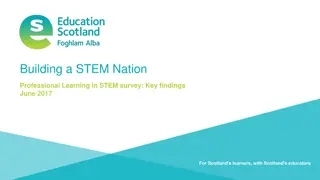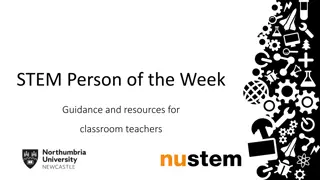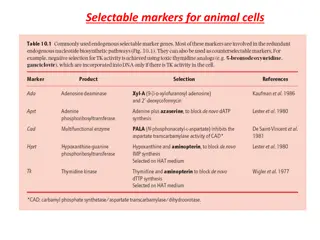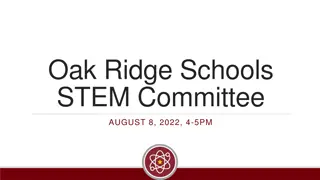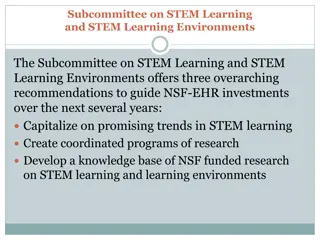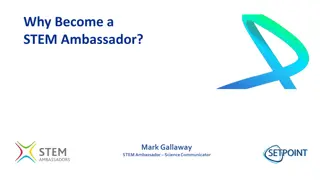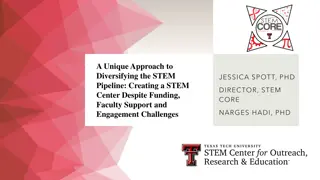STEM K-12 Committee Meeting Highlights
The STEM K-12 Committee Meeting in January 2012 featured discussions on encouraging students in STEM careers, sharing teaching techniques, and making learning engaging. Attendees were urged to see opportunities behind closed doors, with a unique opportunity highlighted by Philip Ward. Icebreaker activities and an individual challenge to create paper airplanes added interactive elements to the event.
Download Presentation

Please find below an Image/Link to download the presentation.
The content on the website is provided AS IS for your information and personal use only. It may not be sold, licensed, or shared on other websites without obtaining consent from the author.If you encounter any issues during the download, it is possible that the publisher has removed the file from their server.
You are allowed to download the files provided on this website for personal or commercial use, subject to the condition that they are used lawfully. All files are the property of their respective owners.
The content on the website is provided AS IS for your information and personal use only. It may not be sold, licensed, or shared on other websites without obtaining consent from the author.
E N D
Presentation Transcript
Elana Slagle, STEM K-12 Committee Aerospace Sciences Meeting January 2012
Contact Information Lisa Bacon Program Manager, STEM K-12 Outreach LisaB@aiaa.org Elana Slagle Chair, STEM K-12 Committee emslagle@gmail.com 2
To: 37607 Message: 345177 4
Why We Hope Youre Here To encourage students to pursue STEM careers To learn techniques and activities to use with K-12 students To share what you ve learned with your others in your region and section To make learning engaging! 6
A Unique Opportunity Keymakers By: Philip Ward 7
Some people see a closed door, and turn away. Others see a closed door, try the knob if it doesn't open... they turn away. 8
Still others see a closed door, try the knob, if it doesn't open, they find a key, if the key doesn't fit... they turn away. 9
A rare few see a closed door, try the knob, if it doesn't open, they find a key, if the key doesn't fit... They make one. 10
Ice Breaker 3-2-1 3: Things you have in common with the other people at your table 2: Important take-aways from the video 1: Way you can Make a Difference (Individually- Write this one on a sticky note.) 12
Individual Challenge Using one entire piece of 8.5 x 11 copy paper, construct a paper airplane that will carry the maximum amount of paperclips the furthest distance. You must be ready to test your paper airplane in 15 minutes. 13
The Requirements All Paperclip Airplanes Must: Use the entire sheet of 8.5 x 11 paper Use the paperclips provided and attach them without the use of any other materials Contain at least 2 fixed wings According to Merriam Webster air plane noun \ er- pl n\ : a powered heavier-than-air aircraft with fixed wings from which it derives most of its lift 14
Point Calculations Total Points= 10d + 5p Where: d = distance rounded to the nearest foot p = the number of paperclips attached 15
Time Remaining 15:00 16
SCAMPER Substitute Combine Adapt Magnify/Minify Put to Other Use Eliminate Reverse/Rearrange 18
Redesign Use the Engineering Process to redesign your paperclip airplane. You will need to demonstrate your new design in a fly-off in 10 minutes. Your airplane must continue to contain the required elements. 19
The Requirements All Paper Airplanes Must: Use the entire sheet of 8.5 x 11 paper Use the paperclips provided and attach them without the use of any other materials Contain at least 2 fixed wings 20
Time Remaining 10:00 21
Debriefing What did we learn? What concepts can we teach from this? 22
Debriefing Hands-On Activity: Paperclip Airplanes Grade Range: K- 12 Possible Concepts Taught: Four Forces of Flight (Thrust, Drag, Lift, Weight) Center of Gravity Generating a Hypothesis Stability and Control Multiple Variables Force and Motion Optimization 23
Todays Student Is a visual and kinesthetic learner Is hyper-connected to the real world via social media Expects technology in their classroom Places a high value on interactivity and active learning Depends on transferable skills 25
Elementary School (K-5) Want to understand why? Require concrete examples of concepts Enjoy pictures, videos, models, props Recommendations: Hands-on activities Movement activities (younger students) Power Point presentations (older students) 26
Middle School (6-8) Want to understand how? Enjoy concrete examples of concepts Connect academics to real-world Enjoy pictures, videos, models, props Recommendations: Hands-on activities PowerPoint presentations with visual media Connections between topics and real-world 27
High School (9-12) Want to understand why not? Connect academics to real-world Enjoy being spoken to rather than spoken above Recommendations: Hands-On Activities PowerPoint presentations with visual media Connections between topics and real-world More specific content extend into college-level 28
Team Challenge Use the materials provided to design a shock- absorbing Mars Lander that protects our astronauts. You must be ready to test your design in 15 minutes. 29
The Requirements All Mars Landers Must Use a Maximum of: 8 straws 3 index cards 1 Dixie cup (3oz) 1 piece of cardboard 3 rubber bands 10 Marshmallows (small) Your astronaut cabin (cup) may NOT contain any type of lid or covering 30
Testing Astronauts (large marshmallows) will be added to the astronaut cabin at the time of the drop No other items may be inside the astronaut cabin with the astronauts All Mars will be dropped from a height of 2 feet onto a table. You MAY NOT TEST your Mars Lander prior to the official competition. 31
Time Remaining 15:00 32
Redesign Use the Engineering Process to redesign your Mars Lander. You will need to demonstrate your new design in 10 minutes. Your Mars Lander must continue to contain the required elements. 33
The Learning Pyramid Lecture 5% Read 10% Audio Visual 20% Demonstration 30% Discussion Group 50% Practice by Doing 75% Immediate Use 90% Source: NTL Institute 34
The Requirements All Mars Landers Must Use a Maximum of: 8 straws 3 index cards 1 Dixie cup (3oz) 1 piece of cardboard 3 rubber bands 10 Marshmallows (small) Your astronaut cabin (cup) may NOT contain any type of lid or covering 35
Time Remaining 10:00 36
Debriefing What did we learn? What concepts can we teach from this? 37
Debriefing Hands-On Activity: Mars Lander Grade Range: 3- 9 Possible Concepts Taught: Potential and Kinetic Energy Measurement Data Collection and Analysis Acceleration Due to Gravity Air Resistance Engineering Design Process Constructing an Experiment 38
When Youre in the Classroom Communicate with the teacher prior to your visit Ask about student needs Share lesson with the teacher and ask for help with supplies Create a lesson that is engaging and appropriate for students Make connections between your job and the student s world An open mind is a creative mind 39
Resources http://AIAASTEMeducation.org 40
Contact Information Lisa Bacon Program Manager, STEM K-12 LisaB@aiaa.org Elana Slagle STEM K-12 Committee Chair emslagle@gmail.com 41
